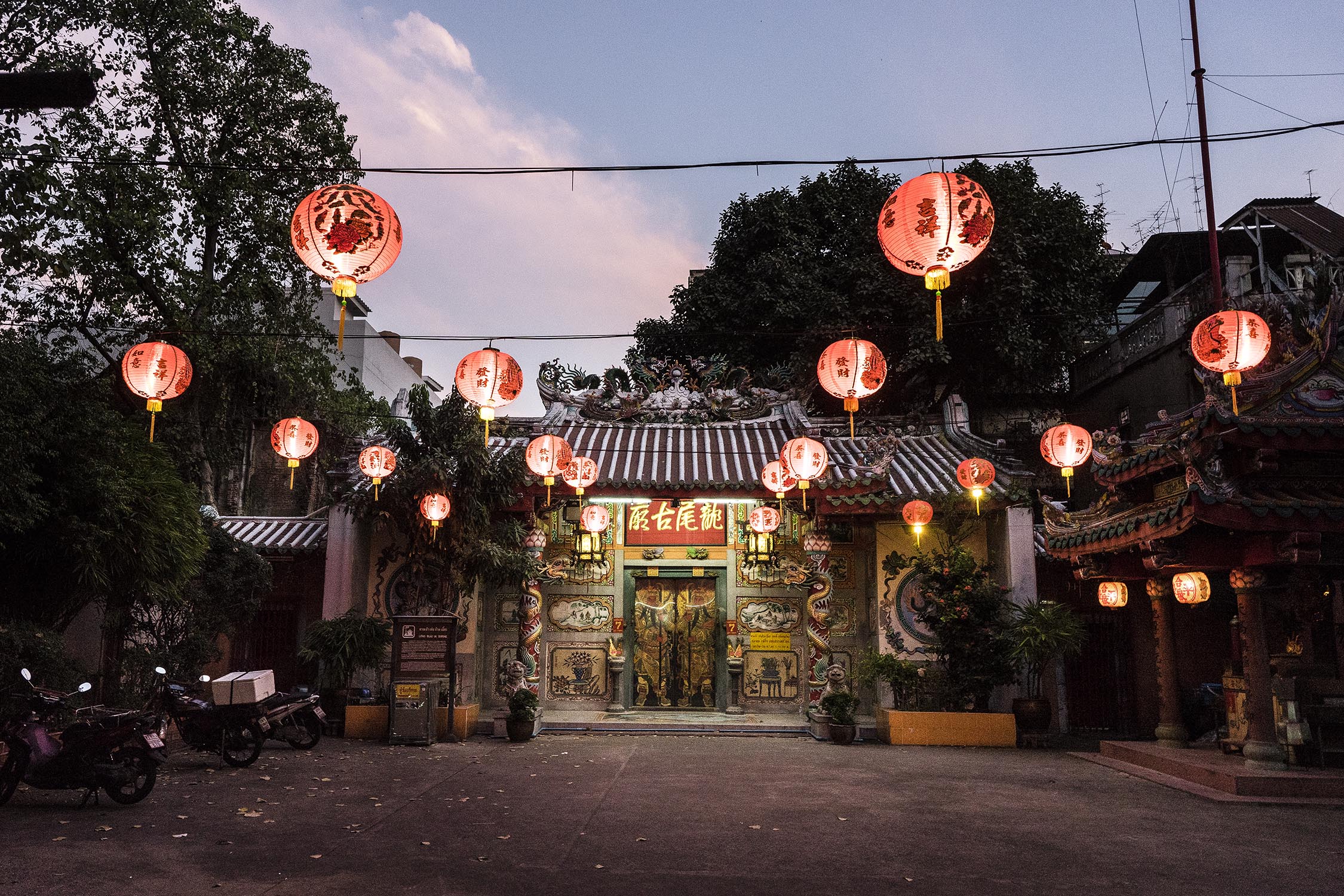feasting for the rooster
YAOWARAT, BANGKOK
On any given day in Yaowarat, Bangkok’s colourful Chinatown, the streets will be swarming. A claustrophobe and front-wearing-backpack-dork’s nightmare, there’s barely a few centimetres of breathing space between you and a deluge of people looking for cheap gold, sifting through barrels of Chinese herbs and teas, slurping noodles on the street, and narrowly avoiding precariously sizzling pots of oils and chicken-rice broth. It's great fun.
During Chinese New Year, it was all this x 1000. This year the usual street parade and lion dances were cancelled in respect of the country’s year of mourning their beloved King Rama XI, but the city was still out to celebrate the year of the rooster, just as low-key as the biggest Chinatown in Thailand can manage. The area of Yaowarat is a fascinating, if slightly manic, look into the city's history, with much of the architecture still standing from Bangkok's early days. Old temples stand wedged between rickety wooden shopfronts, a haze of incense smoke and flickering candles drawing crowds to make their prayers. The main drag, Yaowarat Road, is also an extensive food street, home to a medley of Chinese and Thai eats and an essential part of Bangkok's eating scene. Come hungry.
This Saturday night, the entrance to Khlong Tom market, a maze of narrow laneways off Yaowarat Road, was completely plugged with a never-ending funnel of tourists. Abandoning all hope of heading down there, we took a food break instead and found a pair of ladies in their traditional red silks cooking shui guo (水粿), rice cakes topped with a preserved chilli-radish mixture.
These slippery cold cakes are said to bring about prosperity for all who eat them, so are, obviously, a popular dish eaten on Chinese New Year. Needing all the prosperity we can get for this crazy year ahead, we tucked into a box of them. Side note: I actually only just found out what the translation of this dish meant when I sat down to write this post, thanks to our living Chinese food dictionary, Louis. At the time we were eating blind, and I thought the meaty, rich topping might be mushrooms, they were so savoury and flavoursome. I'm even more impressed now that I know it was just humble radish doing all the work. Life note: never disregard daikon.
We strolled around until the skies grew darker, admiring all glitzy the New-Year paraphernalia lining the streets, patting the frequent street cat and looking for our next snack.
We found it here, at Jae Aun Bua Loy Nam Khing, a dessert stall that's spent the last 20 years dishing out their bua loy nam khing (บัวลอยน้ำขิง), sticky rice sesame dumplings in ginger tea, to hoards of adoring customers. Their stall sits right next to a super busy wonton noodle stall, but we managed to squeeze into a seat for a bowl. Floating in a soup of spicy and sweet ginger tea, the silky white rice balls are filled with a burst of nutty black sesame paste, something I totally fell in love with in China. Jae Aun also sell other desserts, a rainbow of Chinese fruits and jellies with your choice of ginger tea or sweetened condensed milk, if you fancy a toothache on the way home.
Like most nights so far in Bangkok, we ended the evening with some excellent takeaway. Tender and juicy chicken rice, a mix of crispy fried fillets and the traditional white Hainanese-style chicken, and bag full of pa thong kho (ปาท่องโก๋), Thai doughnuts similar to Chinese you tiao, served with a tub of creamy sangkhaya (สังขยา), insanely delish pandan and coconut custard. We made a quick escape off the swelling main street to make our way back home. For a non-celebration, Yaowarat put on a pretty delicious show.
Photography: Leigh Griffiths
Words: Eloise Basuki
All words and images are under copyright © 2019 strangertalk.co






















